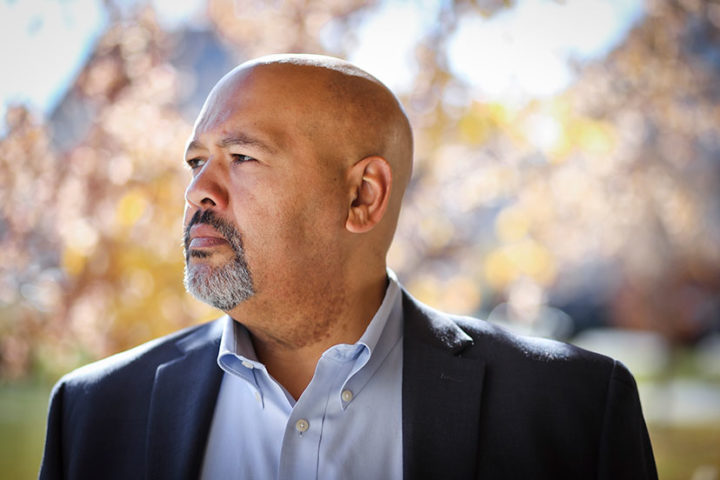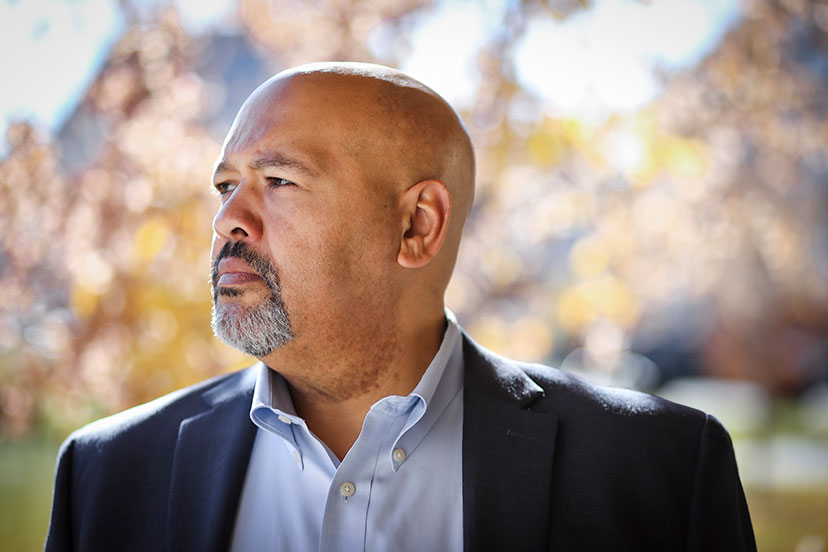By Susan Greene, Colorado News Collaborative.
This investigation is part of the ongoing “On Edge” series about Colorado’s mental health by the Colorado News Collaborative, the nonprofit that unites more than 160 communities and news outlets like ours to ensure quality news for all Coloradans.
Despite the workforce shortage, the Colorado Behavioral Healthcare Council has fought a proposal that the soon-to-be-launched Behavioral Health Administration offer “care coordination” – regional teams to work with some of the hardest-to-serve clients to make sure they’re not dropped from the centers’ care and don’t otherwise fall through the cracks. The proposal was meant to help people like Matt Vinnola whom centers commonly refuse to treat if they have pending criminal charges, or show up high or delusional, or are otherwise hard to manage.
The trade group has sought to block the proposal, saying the centers already coordinate care for their clients and that the state stepping in to do so could divert funding away from their own services. The Council’s opposition comes after it has spent years fiercely opposing attempts to add “no reject, no eject clauses” to centers’ contracts preventing them from refusing to serve the sickest clients or dropping clients who are difficult to serve.
The Council has an unlikely ally in Vincent Atchity, president and CEO of Mental Health Colorado, the leading statewide group advocating for people with mental health challenges. On the task force responsible for recommending reforms, Atchity voted against making care coordination a priority for the new department as what he calls “an attempted appeasement of the (centers) that objected strongly to” it. He describes his vote as “more about diplomacy than actual opposition.”
The no-voters were outnumbered by task force members who supported prioritizing care coordination as perhaps the most important aspect of a reform package the state has made a point of branding “Putting People First.”
Nevertheless, a state report released in early November outlining how the new department will function does not, in 109 pages, mention the kind of hands-on care coordination the task force approved. It instead lists detailed plans for what officials call “care navigation” – ways to help the public on the phone or online find behavioral health providers.
Werthwein – who until this fall was a vocal proponent of providing care coordination – at first said his office intentionally left plans for it out of the report because details about how to staff and fund it “have not yet been worked out.” In that same interview, however, he called the omission “an oversight” and insisted the new department will be prioritizing hands-on care coordination and will revise the report accordingly.
But so far, the so-called “care coordination working group” Werthwein’s office has gathered to address the issue has made no mention of plans for person-to-person care coordination. Instead, the group is focused only on making the state mental health care system more user-friendly technologically.
At least for now, there is no significant plan recognizing that sometimes the centers fail people, and when they do, somebody ought to step in and keep those people from free falling.
What we don’t know
Werthwein’s Office of Behavioral Health says it does not know how many indigent Coloradans the centers are serving or how many people with private insurance policies that don’t cover mental health care the centers are allowing to pay on a sliding scale.
State officials also say they don’t know what happens to tax dollars centers receive for services they end up not providing. The Center for Mental Health in Montrose, for example, was paid to set up a mobile crisis program in the six counties it covers. For logistical reasons, that program didn’t serve San Miguel County. County Commissioner Hilary Cooper spent months trying to figure out where money for her county’s piece of that program went.
“They showed me a bunch of fancy budget slides and explained that it’s really too layered and complicated for someone like (me) to understand, and in the end, I got no answers,” she says.
The Center’s CEO, Shelly Spalding, did not, in response, indicate where her organization spent that money.
“I think we’re transparent. But maybe other people don’t think we’re being transparent enough. Maybe things are being lost in translation,” she said.
Summit County officials say they could not get an answer from Mind Springs Health about what it did with state money it was supposed to spend on a detox program there, which it shut down without telling them. They also say that, despite years of questioning, Mind Springs has never said how much in public funding it was – and should have been – spending in the county.
CEO Sharon Raggio told them, and us, that there is no such information because Mind Springs does not track services or spending per county, but rather more generally in the 10 West Slope counties it’s responsible for covering.

“It’s like a frigging ridiculous mystery when you ask about it,” says Assistant Summit County Manager Sarah Vaine, who refers to Raggio as “a liar” and to Mind Springs as “The Mob.”
“The way the state contracts work and the way the money flows is so confusing. And I think the community mental health centers benefit hugely from that confusion because it makes it harder to hold them accountable,” Vaine adds.
The centers also benefit from their status as private 501(c)3 nonprofits, which, unlike government agencies, are not subject to open records laws. Federal tax law makes it so the centers can – and do, as we’ve discovered in our reporting – refuse to provide information about how they spend public funding beyond the few financial disclosures required by the IRS and state.
Voters in several counties, including Summit, have over the past five years passed tax measures to pay for mental health services they say they aren’t getting from the centers. And one, Eagle County, is for the first time in the 60-year history of Colorado’s safety-net system breaking off from its center, Mind Springs, to create its own – one that officials there say will be more responsive to their residents. Eagle County’s will be the only center in the state that won’t be joining the trade group.
County governments have spent years urging state government to reform Colorado’s safety-net system so taxpayers don’t have to double-pay for services. They embrace the creation of the Behavioral Health Administration, which is supposed to give county governments and the public “a better sense of the dollars flowing into their community, and the outcomes resulting from those investments,” according to a state report released in November.
Still, many county officials worry the new department will not be able to monitor centers closely enough because it still won’t have control over their Medicaid contracts. That responsibility will remain within the separate Department of Health Care Policy and Finance (HCPF).
“If no single agency is actually responsible for these pieces, we fear there won’t be real oversight and we’ll just see a repeat of what we have now,” says Gini Pingenot of Colorado Counties Inc., a consortium of county governments.
County governments specifically have urged the state to audit the centers’ finances and conduct performance audits to make sure they are complying with contract requirements and not being double-paid by the multiple state agencies and programs that fund them.
There are no plans for the new department to do so, despite state officials’ insistence that it will prioritize making the centers more transparent and accountable.
Former state Human Services director Reggie Bicha notes there has long been “significant political pressure” from the trade group not to monitor centers that closely.
“The Council has a tremendous amount of influence,” he says.

Free falling
Before it sought and received lawmakers’ approval to create the new department, the state Behavioral Health Task Force heard more than 200 Coloradans statewide testify about the mental health reforms they want – and desperately need – from state government.
Matt Vinnola’s mom was one of them. Her son was in jail at the time in 2019, awaiting a competency evaluation after having been involuntarily hospitalized eight times in a year. The Denver car saleswoman had come, she said, as “Matt’s mom, advocate and voice.”
Janet Van der Laak wanted to know why she could make a routine doctor’s appointment for her husband, but not an appointment at Mental Health Center of Denver for her adult son who is delusional, unable to remember his birthday or home address, and so sick he doesn’t always know he is sick.
She wanted to know what families like hers are supposed to do when the centers drop their loved ones from treatment. She wanted to know what the centers are doing with hundreds of millions of tax dollars if not treating severely sick people like her son.
“MHCD dropped him… How do you drop someone who’s gravely disabled? How do you deny someone services like that?” van der Laak asked the task force. “We’re leaving out a huge, vulnerable population that we’re not treating.”
The Mental Health Center of Denver’s CEO Clark says privacy laws keep him from discussing Vinnola’s case. “Could things have been dropped? It’s possible for them to have been dropped,” he says, adding that if a client is not seeking care for himself, the center “need(s) to focus on someone who wants treatment.”
Five months after van der Laak’s testimony, one of her older sons, Aaron Ruiz, ended his life in March 2020.
Relatives say the family had not been aware of Ruiz’s mental health challenges, and had been focused on Vinnola’s for the 10 years since he developed symptoms of paranoid schizophrenia.
Five months later, van der Laak took her life by suicide. She was 49.

It has been more than a year since the only real voice Vinnola would listen to stopped saying, ‘Come on, hijito, let’s go get you some help.’ He has been plummeting since his brother’s and mother’s suicides, both of which took place while he was home. He had a long jail stint last fall and winter, and for about seven months now, has been living on the streets, off his medication and untreated.
His father and stepfather have, as of our last conversations with them, lost track of him.
When time allows, his father goes looking for the son whose mental health van der Laak put before everything else, including her own. He searches Denver’s homeless encampments, occupied by many who also need a safety net, but have learned they can’t count on one.
He drives by the condo where van der Laak used to live. The neighbors there sometimes spot Vinnola strung out and sleeping on the sidewalk out front, waiting for her to come back.
If you’re experiencing a mental health crisis, call the Colorado Crisis hotline at 1-844-493-TALK(8255). There is no wrong reason to reach out.
Freelance reporter LJ Dawson contributed to this report.

